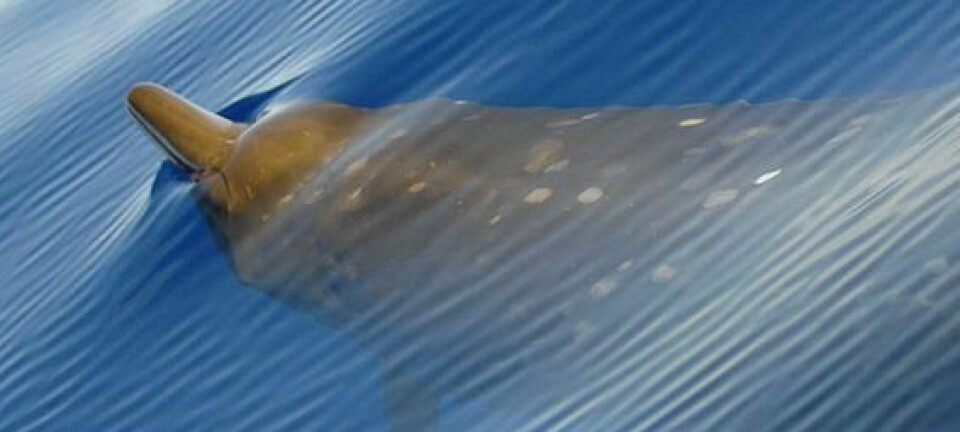
Whale bones found in highway were not from mystery whale
The remnants of a whale found in Sweden in 2009 are 13,000 years old and experts initially thought they were from a legendary whale species. But a DNA analysis punctured that hope.
When road construction workers dug up the remains of an ancient whale near Strømstad in 2009, Swedes started to speculate: Could this be a new example of the famous Swedenborg whale?
The gigantic bones of the Swedenborg whale were found in the same county, Bohuslän, in 1705, by the scientist Emanuel Swedenborg. He thought the buried bones were from some fabled giant.
Later on scientists ascertained that these were from a whale, even though they were unearthed far up on land. But what sort of whale? Experts thought it could have been a species of right whale that had lived in the North Sea more than 8,000 years ago. The creature was then called the Swedenborg whale, Balaena swedenborgii. Its existence as a distinct fifth type within the right whale family has been a matter of conjecture.
A new study shows that the whale found during excavation of a new section of the E-6 freeway in 2009 does not clear this up, as it does not match the discovery made 300 years ago.
The E-6 giant is a Greenland right whale.
13,000 years old
Cecilia Anderung of Uppsala University and her colleagues have studied the recent find. They have analysed DNA found in the skeleton and the marine clay that it had been preserved in.
They have showed that the whale had been swimming off the coast of Sweden 13,000 years ago when it died. The DNA evidence shows it was a bowhead whale, a species of Greenland right whale which has “baleen” plates instead of teeth for filtering food out of the ocean, and today they are only found in the Arctic in waters with drift ice.
This fits the climate along the Swedish west coast at the time the whale lived. It was at the end of the last Ice Age and land had been pressed downward for about 100,000 years by the weight of glaciers. The spot along the highway where the bones were found are now 80 metres above sea level but when the whale lived this was submerged coastal seabed, at least 100 metres below the surface, according to Anderung.
Rather sudden
The ice was melting fast at the time the whale lived, and free of its mass, the land which is now Sweden rose upwards, like a slow-motion trampoline, on its way to today’s elevation.
Analyses of the clay around the whale bones also confer that the de-glaciation process must have been rapid at this spot.
The Swedes found none of the species that usually thrive around the corpse of a whale on the seabed. A huge dead whale provides nourishment to large communities of life forms that specialise and thrive for some time in such a bounty.
The lack of these species would indicate that this whale was covered in sediments from the melting ice in less than a year, according to the Swedish scientists.
---------------------
Read the Norwegian version of this story at forskning.no
Translated by: Glenn Ostling









